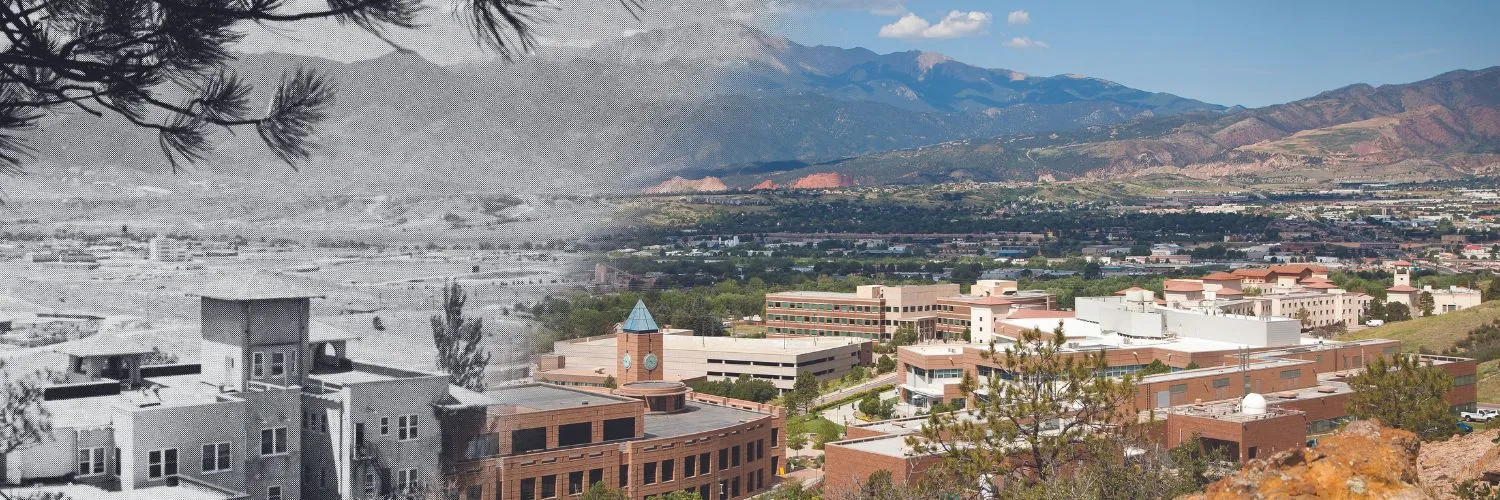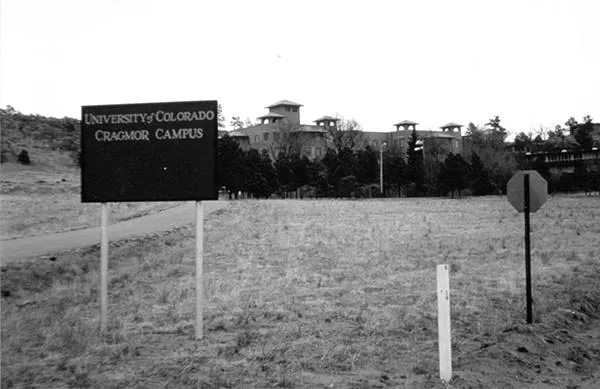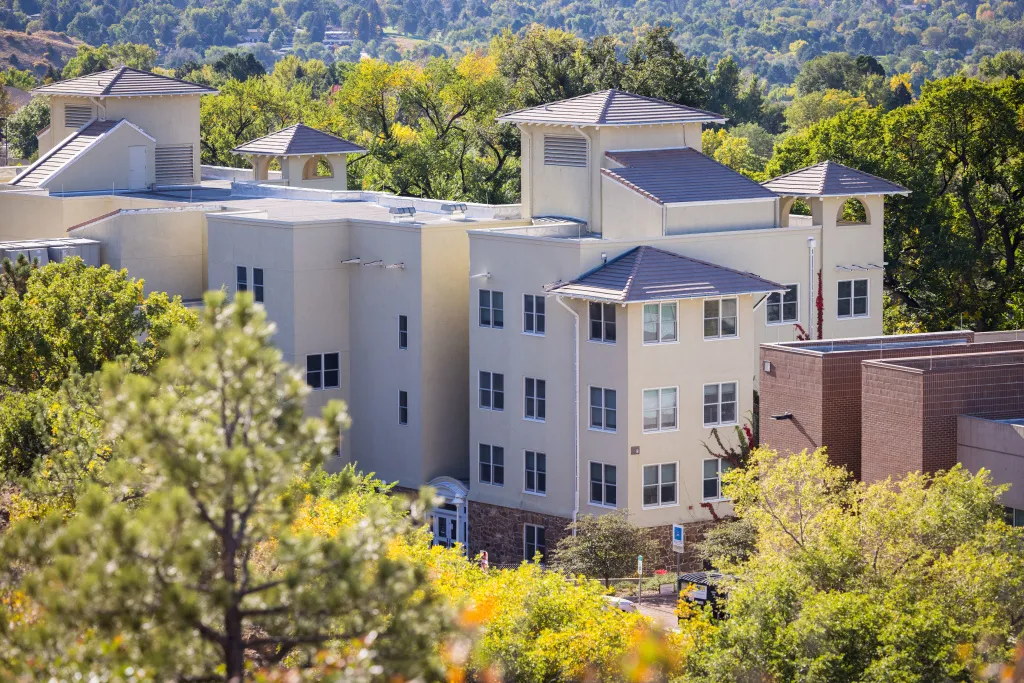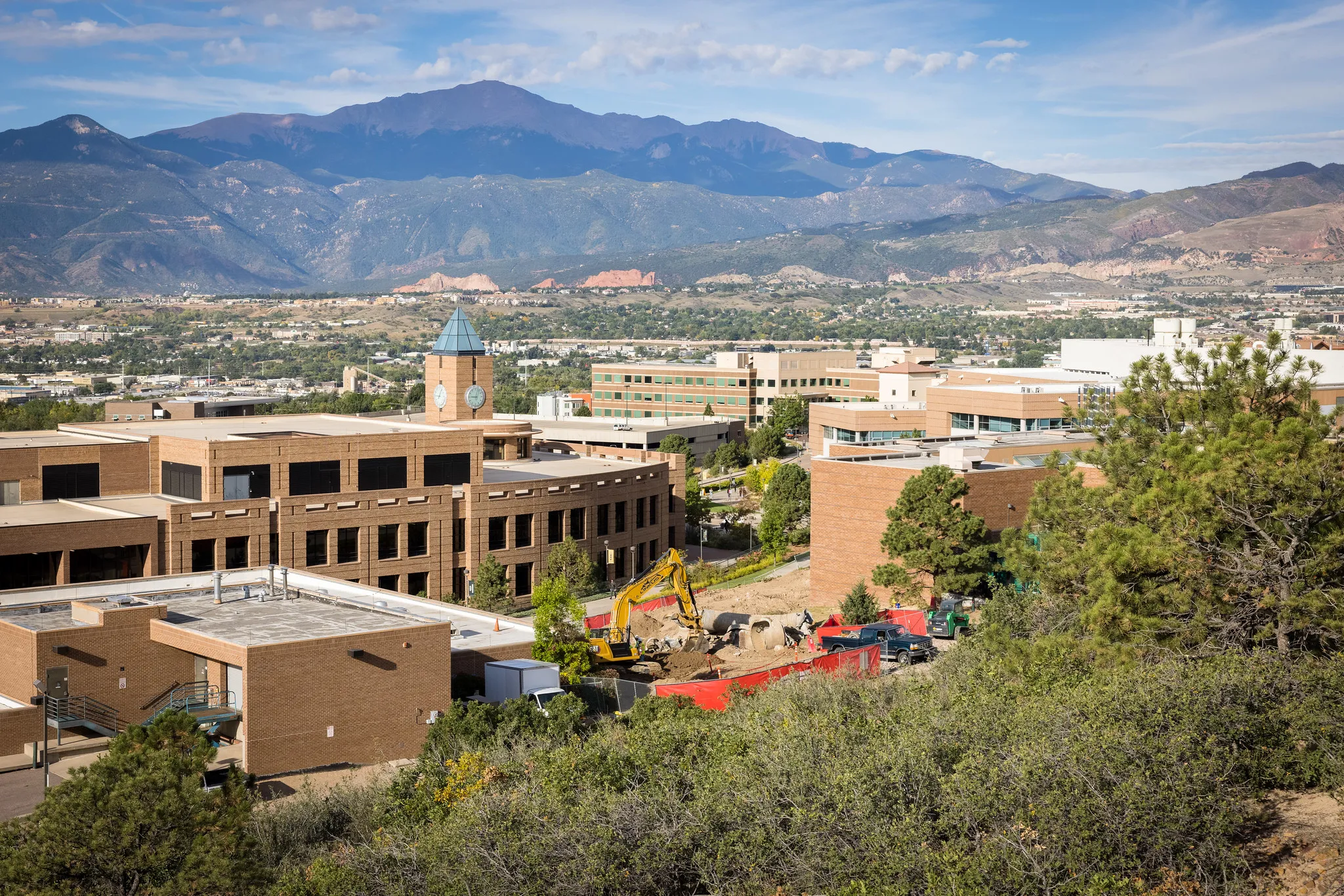
Campus History
Founded in 1965

The history of the University of Colorado at Colorado Springs is as rich as Colorado itself. Beginning in the 1920s, the University of Colorado began offering courses at different locations in Colorado Springs. But the campus didn’t become the one we know today until George J. Dwire sold the 80-acre Cragmor Sanitarium to the University of Colorado. And what did it cost? For just $1.00, UCCS was able to lay claim to the land that would become its campus.
From 1965 to 1972, the “Colorado Spring Center” operated as a division of the CU Boulder campus. That all changed, however, in 1974. During this year, UCCS was recognized as a distinct Colorado university campus, along with the two Denver campuses.
History on Campus

Colorado has always been known for its healthy climate. Over time, it became the “healthcare mecca” for everyone from writers to artists to even corporate tycoons.
Colorado Springs started when General William Jackson Palmer, the founder of Colorado Springs, gave Dr. Edwin Solly 100 acres of land on Austin Bluffs.
Besides the acreage, Palmer also gave the doctor $50,000 to start a tuberculosis sanitarium: the Cragmor Sanitarium.
The Cragmor Sanitarium building was designed by one of Colorado’s most famous architects, Thomas MacLaren. The building has now become the Main Hall on campus.
Campus Timeline
Now & Into the Future

With more than 11,300 enrolled students, UCCS continues to grow and innovate.
UCCS began with only two programs in engineering and business - but now offers over 70+ undergraduate and graduate degree programs across six different colleges:
A Native American Ancestral Site
A millennia ago, a group of Native Americans made UCCS their home.
Remains dating back to 100 A.D. to about 1400 A.D. can be found on the UCCS campus. These 30 sites were used by the Plains Native Americans. Visitors and students alike can see the archaeological remnants of these populations throughout the campus grounds.
We know that our current campus today is built on the lands of our Native brothers and sisters.
At UCCS, we are humbled to be a part of this land legacy. We are committed to recognizing this land’s original owners. This is why we - along with Native American members of our community - have put together a land acknowledgment statement. We are dedicated to displaying it in all types of publications and communications.
As we gather, we honor and acknowledge that the University of Colorado’s four campuses are on the traditional territories and ancestral homelands of the Cheyenne, Arapaho, Ute, Apache, Comanche, Kiowa, Lakota, Pueblo and Shoshone Nations. Further, we acknowledge the 48 contemporary tribal nations historically tied to the lands that comprise what is now called Colorado.
Acknowledging that we live in the homelands of Indigenous peoples recognizes the original stewards of these lands and their legacies. With this land acknowledgment, we celebrate the many contributions of Native peoples to the fields of medicine, mathematics, government and military service, arts, literature, engineering and more. We also recognize the sophisticated and intricate knowledge systems Indigenous peoples have developed in relationship to their lands.
We recognize and affirm the ties these nations have to their traditional homelands and the many Indigenous people who thrive in this place, alive and strong. We also acknowledge the painful history of ill treatment and forced removal that has had a profoundly negative impact on Native nations.
We respect the many diverse Indigenous peoples still connected to this land. We honor them and thank the indigenous ancestors of this place. The University of Colorado pledges to provide educational opportunities for Native students, faculty and staff and advance our mission to understand the history and contemporary lives of Native peoples.